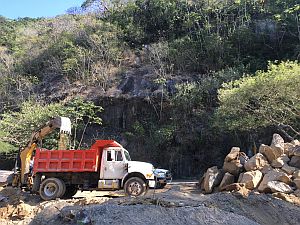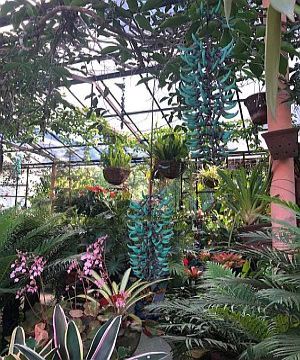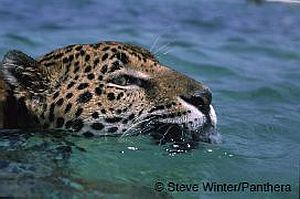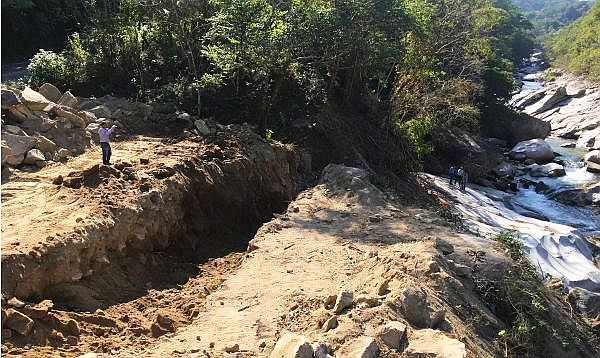Puerto Vallarta, Mexico - We in Jalisco are at a critical moment in history. The fragile ecologic equilibrium of the Río Los Horcones Canyon hangs in the balance, threatening not only native wildlife but also our regional economy and culture that are inextricably intertwined with this natural treasure. Collective action is needed to ensure the survival of this ecosystem.
For the past several months, staff of the Vallarta Botanical Garden and our neighbors in the ejidos of Las Juntas y Los Veranos, Emiliano Zapata, and Boca de Tomatlán have observed an unprecedented deforestation of the wild and scenic Río Los Horcones Canyon accompanied by large-scale bulldozing. What we saw was beyond any of the routine highway maintenance that happens each year and we wondered what was coming down the pike. No one seemed to know and our communities were angered to not be consulted.
 |
They informed us that they were making an ecologically friendly dam. They also assured us very politely that they had all of their permits to do so and that everyone would benefit from their actions. In light of the destruction we saw, we found their words to be unconvincing.
Upon sharing this news with our neighbors and friends throughout Jalisco and beyond, a barrage of denuncias (official complaints) were filed with PROFEPA, Mexico's Ministry/Secretariat of the Environment & Natural Resources.
On Tuesday, January 22nd, the Garden hosted a meeting with community members from Las Juntas y Los Veranos along with Mario Topete Cortés, Ejido President of Boca de Tomatlán y Mismaloya, and José Ayala, a representative of Grupo Hidrogenerador de Occidente, the company that was carrying out the demolition.
José Ayala stated the alleged specifications of the project which included a total dam of the Río Los Horcones approximately 300 meters downstream of Chico's Paradise, diversion of the river by way of kilometers of aboveground steel pipeline, and a power plant in the community of El Polvorín in Boca de Tomatlán.
From our estimations, this would leave the river completely dry for the majority of the year except during the rainy season, diverting every last drop of water into the tubing.
When asked for architectural plans of the project detailing the exact placements and dimensions, Ayala stated that as a private company Grupo Hidrogenerador de Occidente is not required to demonstrate such plans. He then went on to describe the project as a harness of a renewable resource that would provide much needed power.
 |
He also wouldn't indicate if the water itself would become privately owned by the dam owner and later made available for sale and/or pave the way for further change of land use. Ayala told community members that they should be grateful to have a company in their area that really cares for the environment and is working on their behalf.
Reporters who attended this meeting quickly began spreading news throughout Puerto Vallarta and the greater Banderas Bay region. Photos and videos of the damage started circulating on social media and officials of municipal, state, and federal agencies were appealed upon to stop the project.
On Thursday, January 24th, federal agents of PROFEPA assigned to the State of Jalisco inspected the destruction and rapidly ordered the operations to cease and desist, at least until further investigations are completed.
Local community members and environmentalists all over are applauding this win, but we are deeply concerned about the irreversible destruction of the past several months that intensified rapidly in the week preceding January 24th. We are even more concerned about the future of this river canyon.
 |
One of its most dramatic sections is the deep canyon that it has carved into an area reaching from what is now the Ejido of Las Juntas y Los Veranos down to Boca de Tomatlán. Here, it forms crystal-clear emerald-tinted pools connected by surging rapids and splashing cascades. Included along its descent is one particularly breathtaking waterfall of over 20 meters thundering against a sheer granite wall painted with ferns, bromeliads, and orchids. Much of the granite in this canyon is polished to a marble-smooth finish rife with captivating formations that would bedazzle any sculptor. The steep canyon sides are a mosaic of naturally denuded cliffs and dense thickets of tropical dry forest.
This seemingly indomitable terrain has kept it one of the region's last great bastions of native wildlife with a vast array of species including the emblematic jaguar, ocelot, Military Macaw, and even river otters. But, as clearly evidenced around the world, there is no mountain too high or canyon too deep to escape the threat of exploitation and the destruction of modern explosives and heavy machinery.
In the Puerto Vallarta region, our economy is tourism and the beauty and diversity of our wildlife is a principal draw bringing visitors to our destination. Allowing the destruction of our natural resources would be like killing the proverbial goose that laid the golden egg.
Acapulco, whose very name means, "where the reeds were destroyed," may serve as a good close-by example of how a tourism-based seaside economy can suffer if it becomes overbuilt and if its critical natural areas are not protected. Incidentally, Puerto Vallarta's indigenous name, Xihutla, means, "place where the turquoise-blue reeds grow."
 |
During much of our struggle to stop the recent destruction along the banks of the Río Los Horcones, we heard many people saying things like, "What a shame, but there's probably nothing we can do about it." Others said, "You should be careful; there may be big money and big interests behind this."
Yet, the bold few who rallied with us, attended public meetings, filed denuncias, and spoke up have stopped the bleeding, at least for now.
Until this canyon is permanently protected, it will remain under threat - not just from dams, pipelines and power plants - but also illegal lumber harvesting, poaching, and contamination. Additional forces such as invasive species and climate change represent threats against wildlife in even the best guarded parks and preserves.
In recent years, the Vallarta Botanical Garden has been acquiring new lands to grow its native forest preserve. This reserve is now over 25 hectares of protected land adjacent to the landscaped gardens with its visitor infrastructure occupying roughly 3 hectares, for a combined property of approximately 28 hectares (about 60, 10, and 70 acres respectively).
Our recent wildlife camera trapping work in conjunction with our collaborators at Panthera, the world's foremost NGO dedicated to conserving big cats in the wild, has motivated us to set much larger goals for securing new land. We used to think of land acquisitions for this preserve in terms of dozens of hectares, but our new goals should probably be in terms of hundreds of square kilometers.
 |
With the help of our community and the generosity of those willing to invest into the protection of natural spaces, we can begin purchasing additional land with intact habitat while it still lasts in such condition.
Those interested in helping towards this goal through their time, talent, or treasure are encouraged to contact the authors directly. Please send your communications to info(at)vbgardens.org with "Forest Preserve" in the subject line.
Communities that are alert, dedicated, and united can ensure that their precious natural areas are destined to a thriving future and will continue providing benefits, including clean air, clean water and, perhaps most cleansing, all—pure natural beauty.
Please write to us at info(at)vbgardens.org to learn how you can help.
ABOUT THE AUTHORS
Neil Gerlowski has served as the Executive Director of the Vallarta Botanical Garden (VBG) since 2010. He helped form this garden's international science advisory board, which among other activities, is working to study and document the diverse native plant life of the VBG's forest preserve as well as participate in plant research elsewhere in Mexico and abroad. Neil Gerlowski has a Master's of Arts in Teaching from the University of New Hampshire (2001) and successfully completed Longwood Gardens' Fellows Program in 2018.
Dr. Rafael Guzmán Mejía first gained international fame as a botanist in 1977 when he rediscovered Zea perennis, an important teozintle, or ancient ancestor of domesticated corn, assumed to have gone extinct in the wild for decades. In 1977 he discovered yet another teozintle, Zea diploperennis, and wrote its first scientific description together with Hugh Iltis and John Doebley. These plants helped spearhead the long-term legal protection for a vast wilderness area that is now the Sierra de Manantlán Biosphere Reserve. Dr. Rafael was this reserve's founding director. He aspires to contribute to the creation a similar vast, contiguous reserve in the mountains of Puerto Vallarta and Cabo Corrientes.

Visit the internationally famous Vallarta Botanical Garden located just 30 minutes south of Old Town at Km. 24 on Highway 200 and easily accessible by public transportation and taxi. This 64 acre wildlife preserve and botanical garden have something fun for everyone. Over 200 species of birds have been observed on the Garden's grounds. Don't forget to bring your swimsuit for a refreshing dip in the jungle river. See plantings of vanilla, chocolate, and hundreds of other botanical delights! Authentic Mexican Cuisine is served in the Hacienda de Oro Restaurant from 10 am to 5 pm. The Garden is open daily from 9 am to 6 pm (closed Mondays from April 1 to December 1). Garden admission is just $200 pesos. For more information, call (322) 223-6182 or visit vbgardens.org.
Click HERE to learn more about Vallarta Botanical Gardens.



